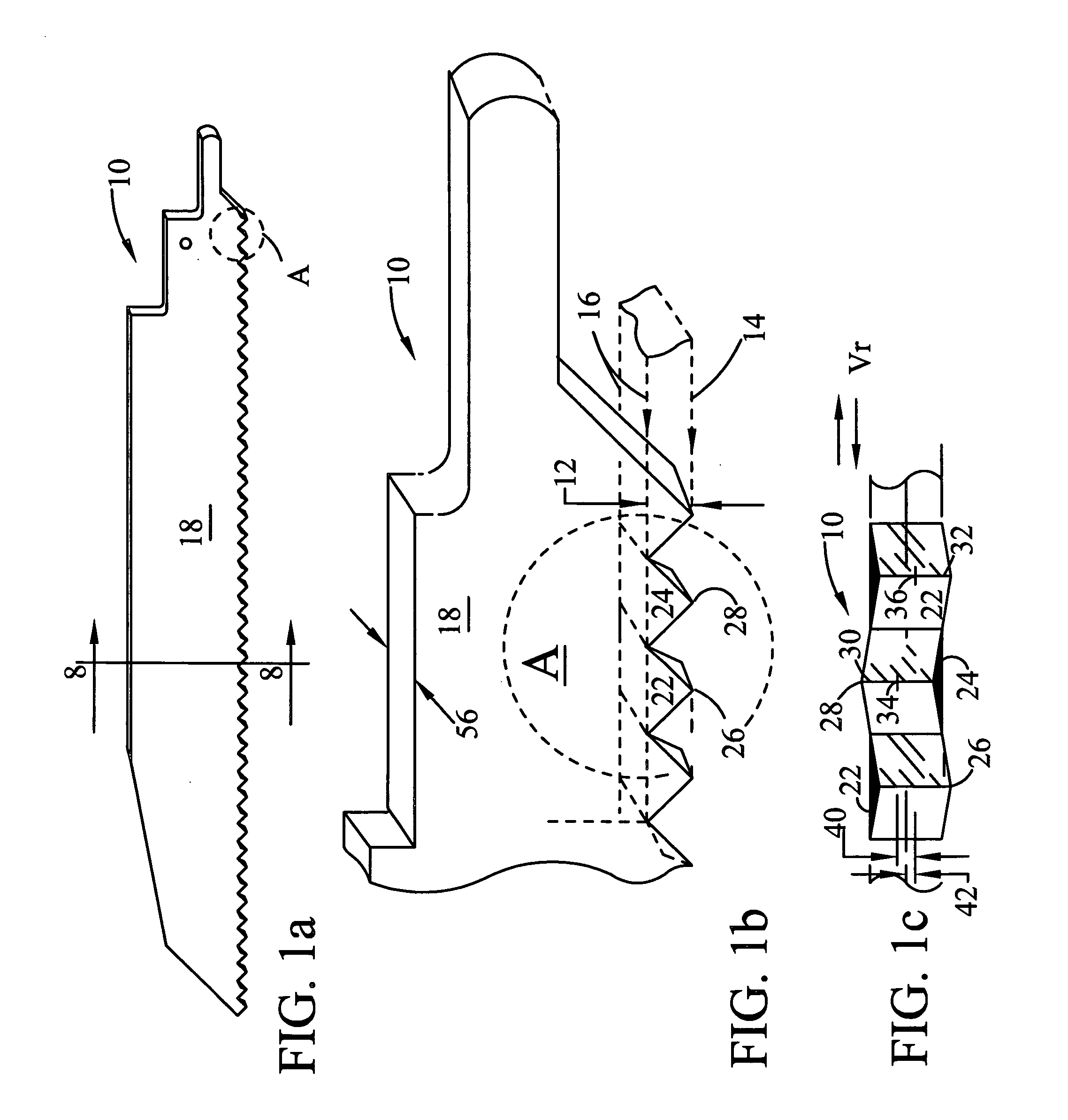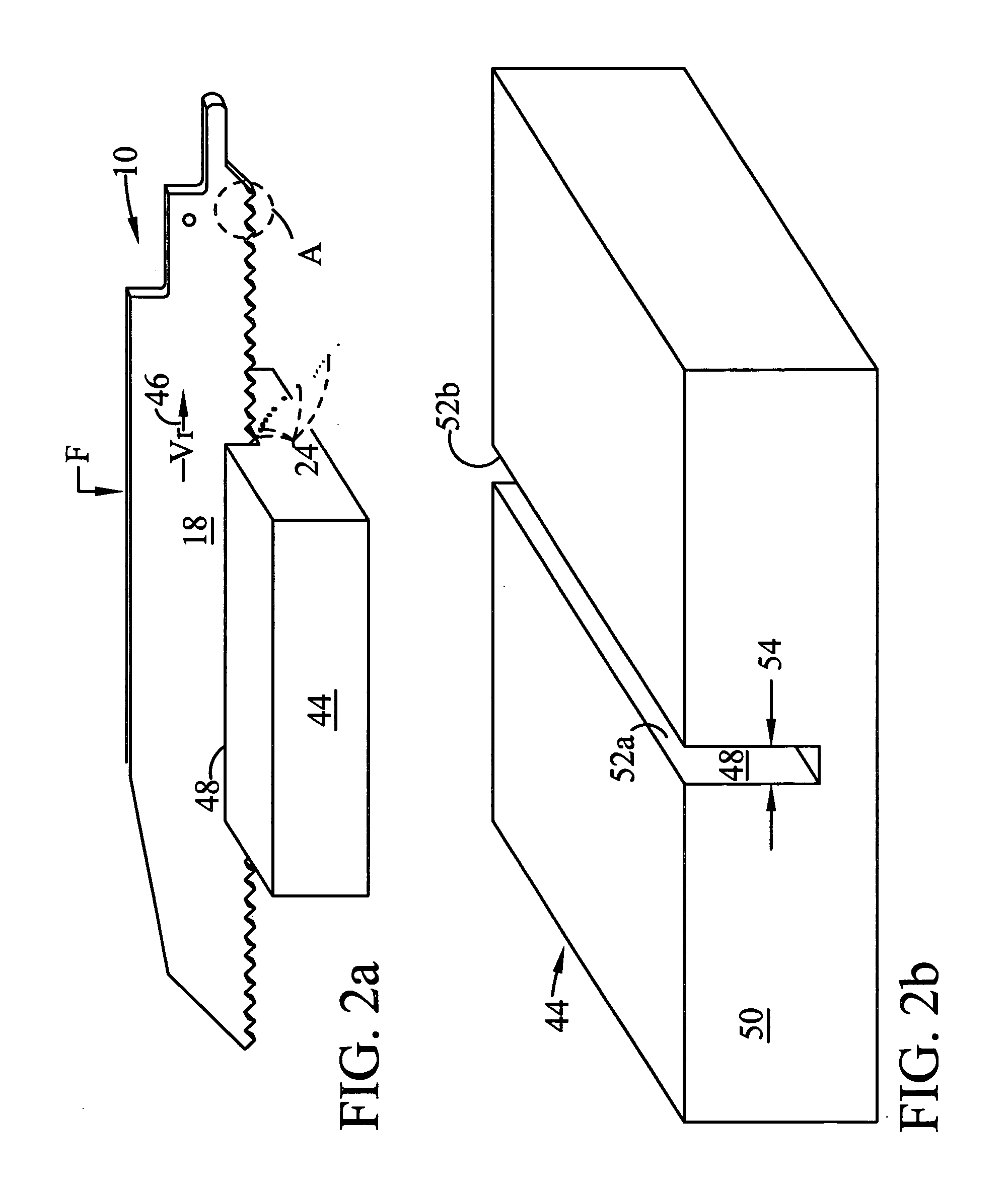Saw cutting blade
a cutting blade and saw blade technology, applied in the field of tools, can solve the problems of poor surface quality of the material being cut, and achieve the effects of reducing the size of debris particles, enhancing the removal of debris from the kerf, and sufficient structural strength
- Summary
- Abstract
- Description
- Claims
- Application Information
AI Technical Summary
Benefits of technology
Problems solved by technology
Method used
Image
Examples
Embodiment Construction
[0046]FIG. 1a. shows a typical reciprocating Saw Blade 10. FIG. 1b shows an expanded region “A” of FIG. 1a that is identified by phantom circle and the letter “A” in each of the views. FIG. 1b is expanded to schematically show several of the saw teeth on the sawblade of FIG. 1a for the purpose of identifying and naming parts of the SawBlade 10 and the saw teeth that are shown with particularity. Saw Blade 10 has a Primary Cutting Edge Region 12 between phantom lines that extend from the Cutting Edge of phantom line 14 to the Aft Root Line or plane identified by phantom line 16. The Primary Cutting Edge Region 12 is at the leading edge of the blade. In addition to the Primary Cutting Edge Region 12, each saw blade has an Aft Body 18 that is integral to and behind the Primary Cutting Edge Region 12, the regions being contiguous along the Aft Root Line 16.
[0047] Early Comments on the Circular Blade
[0048]FIGS. 23 and 24 each show a phantom line 60 that identifies the location of the A...
PUM
| Property | Measurement | Unit |
|---|---|---|
| Angle | aaaaa | aaaaa |
| Distance | aaaaa | aaaaa |
| Distance | aaaaa | aaaaa |
Abstract
Description
Claims
Application Information
 Login to View More
Login to View More - R&D
- Intellectual Property
- Life Sciences
- Materials
- Tech Scout
- Unparalleled Data Quality
- Higher Quality Content
- 60% Fewer Hallucinations
Browse by: Latest US Patents, China's latest patents, Technical Efficacy Thesaurus, Application Domain, Technology Topic, Popular Technical Reports.
© 2025 PatSnap. All rights reserved.Legal|Privacy policy|Modern Slavery Act Transparency Statement|Sitemap|About US| Contact US: help@patsnap.com



